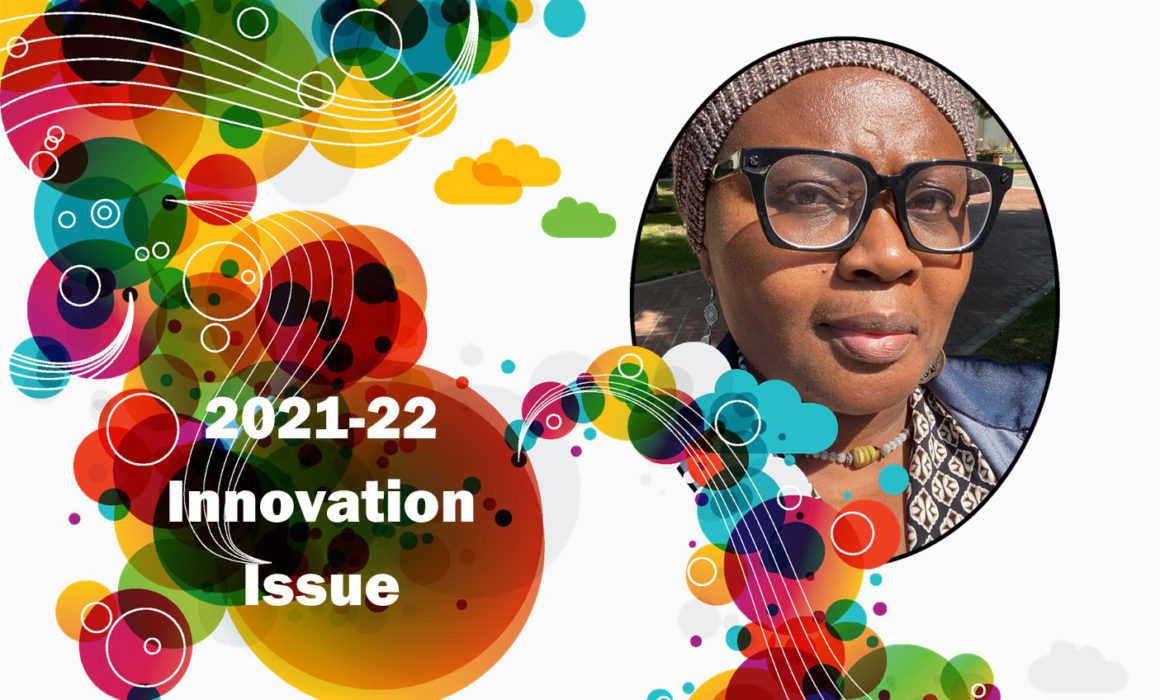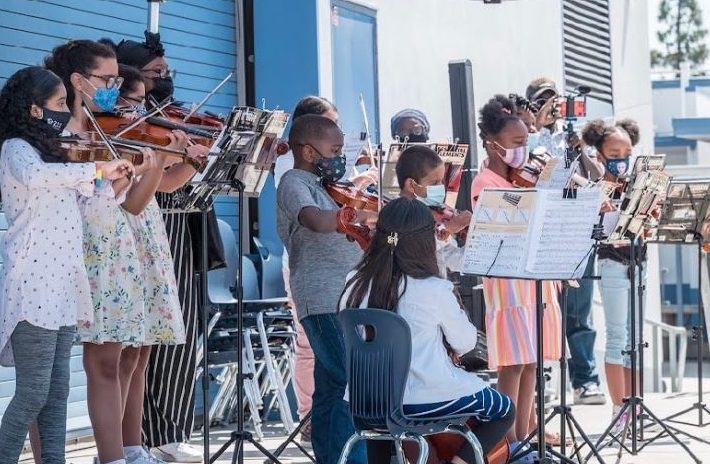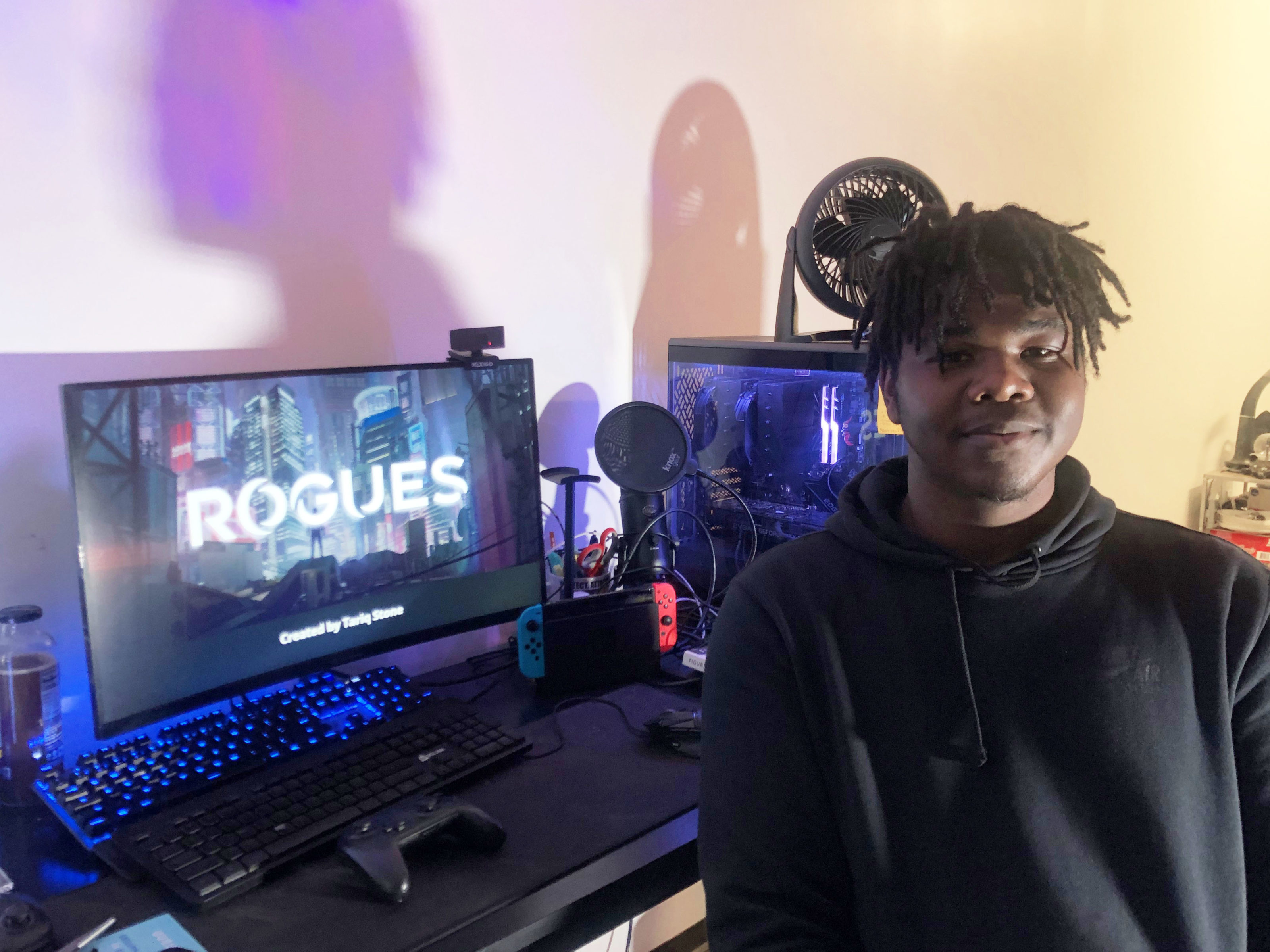
Our 2021-22 Innovation Issue salutes educators who dare to imagine a world where life is better for their students:
“I have seen students blossom and say they want to go to college and become excited about opportunities in the real world.”
“I believe that my job as a teacher is to find out what each child needs — what their goals and dreams are — and find people and programs to connect them with, to make their dreams possible,” says Aba Ngissah, who teaches a fifth and sixth grade combination class at Hudnall Elementary School in Inglewood.
She encourages her students to dream big, although many face challenges and are low-income. During the pandemic, she and other teachers used their own money to buy families food and cleaning and hygiene supplies.
Inglewood students may go without some things, but Ngissah didn’t want them to go without enrichment opportunities available to students in wealthier communities. Because she too dreams big, this past summer she brought together a team of educators, administrators, district leaders, tech leaders, artists and musicians for a summer enrichment camp where approximately 200 students were encouraged to discover their creative side and explore career paths.
Professionals volunteered their time or were paid to teach career skills, serve as role models, and work with Inglewood Teachers Association (ITA) members. STEAM (science, technology, engineering, arts and math) was integrated throughout.
Amazingly, Ngissah (who is president of ITA) convinced the school district, foundations, nonprofits, private businesses and community organizations to provide resources and funding. The summer camp was so successful that new course offerings based on the program are becoming available in the district. This collaboration between ITA and the district honors the goal both parties set to work cooperatively to help students succeed.
The camp was a huge step toward equity for Inglewood Unified, which was taken over by the state in 2012 and remains in receivership, with severe budget cuts imposed to keep the district afloat. The arts were mostly eliminated, says Ngissah.
The eight-week summer camp, held at Woodworth-Monroe, a TK-8 school, offered “academies” for students to choose from.

Students in the Music Academy.
For the music academy, Ngissah and her team partnered with Musicians at Play (MAP), a Los Angeles foundation that provides students and teachers access to music education through live performances and mentorship. They also partnered with the Musicians Guild union, whose members worked with students. Bertrand’s Music store donated instruments. The district paid for the program, which served some 50 students in grades 2-10.
The program is continuing, says Ngissah, “with four interested school sites and after school. MAP is also working with us to get either credentialed music teachers or CTE [career technical education] credentialed music teachers.”
Ngissah was key in creating the summer animation academy for high schoolers, funded by the district, by partnering with BRIC (Break, Reinvent, Impact and Change), a foundation that aims to increase representation in entertainment, gaming, media and tech for women and underrepresented people, plus Sony and Nickelodeon, which provided resources for teachers and students. Students were encouraged to pitch ideas for their own animated series.
The partnerships continue, Ngissah says. “Students will be working with experts in the industry on animation and game design. We are working on making this an ‘a-g’ class [meeting UC and CSU admission requirements].”

Student Tariq Stone got an expanded view of art and the entertainment industry, thanks to the summer animation academy.
“My experience with the BRIC animation class was highly positive,” says Tariq Stone, a student who now attends California College of the Arts. “It gave me a ton of new opportunities and taught me things that have been so helpful as I go through art school. I feel like I have an expanded view on art and the entertainment industry thanks to those classes.”
At the Girls Make Beats academy, GMB professionals taught girls about sound engineering, podcasting and careers as music producers.
With the smartphone filmmakers project, created by Ngissah and funded by the district, students learned writing and filming skills, while collaborating with industry experts from We Make Movies, a collective that offers online tutorials, and We Uplift the World Foundation, whose mission is to create positive change through art, entertainment and education.
“Students learn literacy through filmmaking and will hopefully obtain internships and paid jobs through this program,” says Ngissah; she will use a recently awarded CTA Institute for Teaching innovation grant to support the project this year.
These enrichment programs have transformed students who were struggling or did not like school, says Ngissah.
“I have seen students blossom and say they want to go to college and become excited about opportunities in the real world. They are happier and doing better in their regular classes. I believe that through art and STEAM, we address social-emotional learning.”
Ngissah, a teacher for more than two decades, also serves as professional development chair for ITA and is a member of the Instructional Leadership Corps, a partnership of CTA, the Stanford Center for Opportunity Policy in Education, and the National Board Resource Center at Stanford University to foster teaching excellence.
“I’m a person who can’t do just one thing at one time,” she admits. “That’s just the way my brain works.”
She moved to America from Ghana as a child. “My education in Ghana was top-notch, but not all children there receive an education.”
What drives her is the belief that all students deserve an excellent education.
“In the United States of America — where people from other countries are dying to come so their children can have a better life — we should have excellent schools for everybody. Instead, we have schools that are struggling. Teachers shouldn’t have to fight for programs in this country. But I am willing to fight — so students can achieve their dreams.”
The Discussion 0 comments Post a Comment